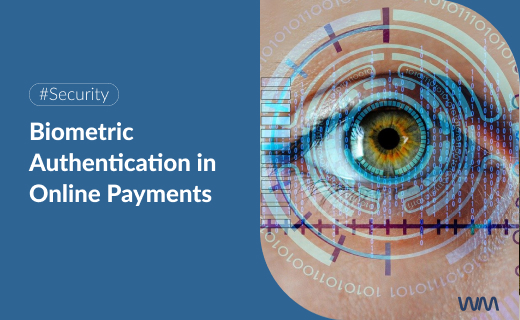Biometric payments represent one of the most secure and convenient innovations in digital transactions. By using unique physical characteristics like fingerprints, facial recognition, and voice recognition, biometric payments have become part of everyday online transactions. According to recent studies, the global biometric card market will grow by nearly 118% from 2024 to 2029, highlighting the growing interest in this technology.
The History of Biometric Payments
The use of biometric traits for identification dates back to ancient civilizations, but it was in the 19th century that they began to be used in a more structured way. In 2013, Apple introduced Touch ID with their iPhone 5S, marking the start of widespread biometric use in consumer devices. Today, biometric payments have made their way to smartphones and digital wallets, allowing millions of users to authenticate payments and make transactions securely and quickly.
How Do Biometric Payments Work?
Biometric payments use authentication technologies that recognize unique physical or behavioral characteristics, such as:
- Fingerprints: widely used in smartphones and biometric cards.
- Facial recognition: integrated into applications like Apple Pay.
- Iris scanning and voice recognition: less common technologies but with a high level of security.
Advantages of Biometric Payments
- Increased security and reduced fraud: Biometric data is harder to forge than traditional PINs or passwords. This reduces the risk of fraud and enhances transaction integrity, a crucial benefit for both businesses and customers.
- Faster transactions and convenience: By eliminating the need to remember PIN codes or carry multiple cards, biometric payments streamline and speed up transactions. A quick scan is all that’s needed to complete a purchase, improving the customer experience.
- Customer trust and brand loyalty: Implementing biometric payments also boosts the company’s reputation in terms of security and innovation. People feel more comfortable and protected, fostering greater loyalty toward brands that adopt these technologies.
Data and personalization: By providing data on purchasing behaviors and preferences, biometric systems help businesses personalize their offerings, improving customer retention and satisfaction.
Some Challenges of Biometrics in Payments:
- Implementation cost: The initial infrastructure required can be expensive, which is a challenge, especially for small businesses. Additionally, integrating biometric systems into existing payment platforms can be complex.
- Data privacy: Storing and managing biometric data raises serious concerns about privacy and compliance with regulations like GDPR. Sensitive user data must be protected to avoid privacy breaches.
- Generational gap: According to an NMI study, while 55% of consumers aged 25 to 40 have used biometric payments, only 10% of those over 57 have adopted them. This generational gap requires tailored education to help people understand the benefits and uses of this technology.
Biometric Payments in the Future:
Influence of the Pandemic:
The COVID-19 pandemic accelerated the demand for contactless payments, and biometric payments became a popular option due to the security and convenience they offer. Today, this trend continues to grow, driven by consumer preference for secure, contactless payment methods and the speed of transactions.
Financial Inclusion:
Biometric payments can facilitate financial inclusion, especially for individuals who do not have access to traditional banking or who have trouble remembering PINs or passwords. This technology can be particularly useful in regions with high illiteracy rates or limited banking access, as people can manage a transaction simply using their face.
Technological and Regulatory Advancements:
With advancements like biometric cards, which combine the familiarity of credit cards with biometric security, faster adoption is expected. Furthermore, international regulations and standards, such as those developed by the FIDO Alliance, are driving the secure implementation of these systems globally.
The Evolution of Biometric Payments
Increase in Adoption:
The global biometric payments market is expected to reach nearly $18.4 billion by 2029. With biometric technology gaining increasing acceptance and a more robust infrastructure, biometric payments are on track to become a standard in digital transactions.
New Applications and Possibilities:
In addition to its use in retail and banking, biometric payments are expected to expand into sectors such as healthcare and public services. Biometric data could be used not only for payments but also for managing permissions, access, and official procedures, thus broadening the scope of this technology.
Conclusion
Biometric payments are solidifying as a major step in the evolution of financial security. By enhancing both security and convenience, this technology meets the demand for fast and secure transactions. With advancements in regulations and infrastructure, biometric payments may soon become the norm, transforming how we shop, pay, and access services.
At Wannme, we offer a variety of payment methods, including biometric payments. Get to know us better, we’ll tell you firsthand.
Follow us on LinkedIn for more updates.






